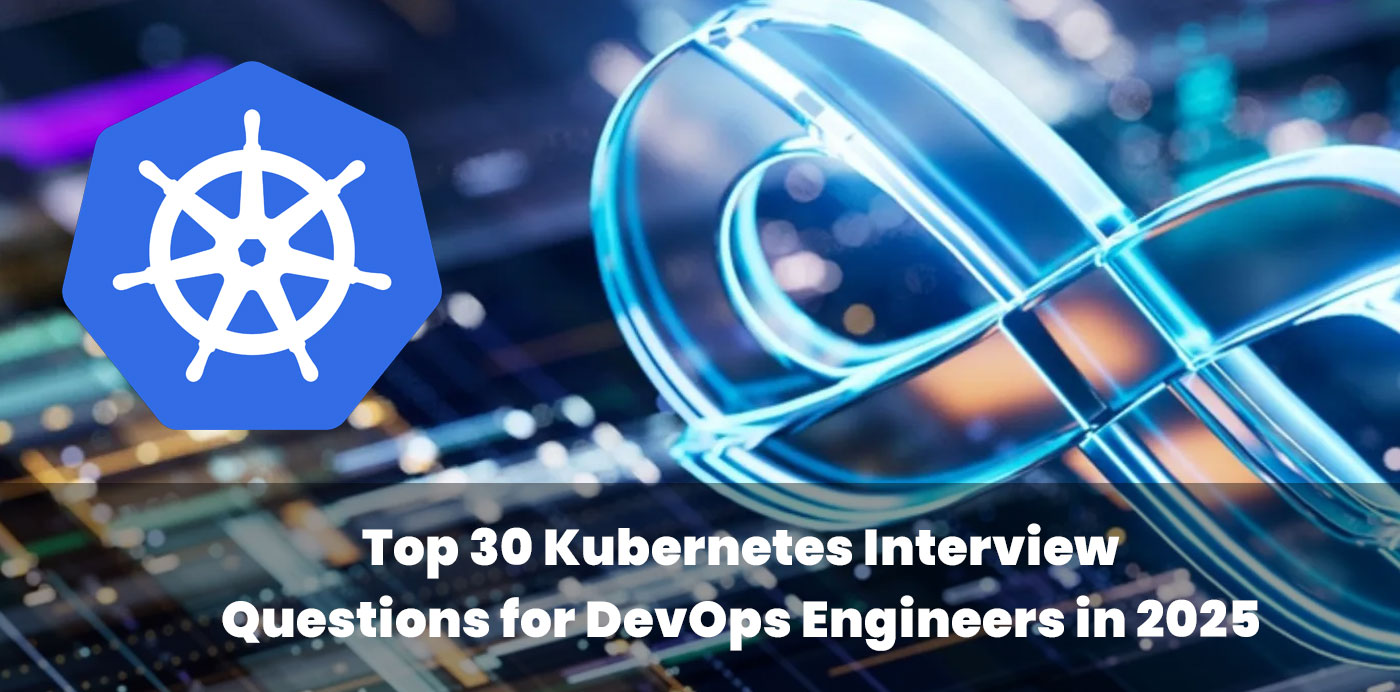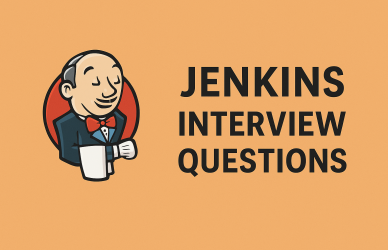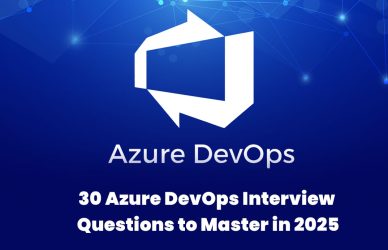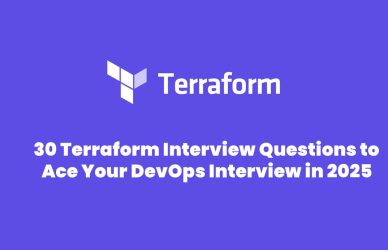This article is crafted for DevOps professionals preparing for Kubernetes (K8s) interviews in 2025. It covers key concepts like Pods, Deployments, Ingress, Services, and includes kubectl commands, real-world scenario-based questions, and a glossary of essential Kubernetes terms. Optimized for “K8s interview prep”, it also promotes Kubernetes-related jobs on www.clouddevopsjobs.com — ideal for sharing on Twitter/X with the hashtag #Kubernetes.
🚀 Introduction: Why Kubernetes Mastery Is Essential in 2025
Kubernetes continues to dominate as the de facto platform for container orchestration. With the explosion of microservices, DevOps engineers are expected to understand everything from Pods and Deployments to cluster autoscaling and production-grade troubleshooting.
Whether you’re targeting a role in SRE, Cloud Engineering, or DevSecOps, this guide provides:
- The top 30 Kubernetes interview questions
- Real
kubectlcommand examples - Links to active job listings to apply your skills
🧱 Section 1: Kubernetes Fundamentals
1. What is Kubernetes?
Kubernetes (K8s) is an open-source container orchestration platform that automates deployment, scaling, and management of containerized applications.
2. What is a Pod in Kubernetes?
A Pod is the smallest deployable unit, consisting of one or more containers that share the same network namespace and storage.
3. What is a Deployment?
A Deployment manages a set of replica Pods and ensures the desired state by recreating or replacing failed Pods.
bashCopyEditkubectl create deployment my-app --image=nginx
4. What is a Kubernetes Namespace?
A namespace is a virtual cluster within a Kubernetes cluster, useful for isolating workloads.
bashCopyEditkubectl create namespace dev-team
5. How do you scale a deployment?
bashCopyEditkubectl scale deployment my-app --replicas=3
🌐 Section 2: Services, Networking, and Ingress
6. What is a Kubernetes Service?
A Service exposes a set of Pods as a network service. Types:
ClusterIP(default)NodePortLoadBalancerExternalName
7. What is an Ingress?
An Ingress exposes HTTP/HTTPS routes from outside the cluster to services inside using a controller (e.g., NGINX Ingress Controller).
8. How do you expose a Deployment via NodePort?
bashCopyEditkubectl expose deployment my-app --type=NodePort --port=80
9. How does DNS work in Kubernetes?
Every service gets a DNS name like:<service>.<namespace>.svc.cluster.local
10. What is a NetworkPolicy?
A NetworkPolicy restricts how Pods communicate with each other and with external endpoints — critical for network-layer security.
⚙️ Section 3: ConfigMaps, Secrets, and Volumes
11. What is a ConfigMap?
Stores non-sensitive configuration data in key-value format. Injected as env vars or volumes.
12. What is a Secret?
Similar to ConfigMap, but designed to hold sensitive data like passwords and API keys.
13. How do you mount a volume into a Pod?
yamlCopyEditvolumes:
- name: config-volume
configMap:
name: app-config
14. How do you update a ConfigMap in a running Pod?
You typically need to recreate the Pod, unless using Reloader, Kustomize, or a reload sidecar.
15. What’s the difference between emptyDir and hostPath?
emptyDir: Ephemeral, tied to Pod lifecyclehostPath: Maps to host’s filesystem — less secure
🧠 Section 4: Advanced Kubernetes Concepts
16. What is a StatefulSet?
Manages stateful applications with persistent IDs and volumes.
Used for: PostgreSQL, Kafka, Redis
17. What is a DaemonSet?
Ensures a copy of a Pod runs on all (or some) Nodes.
Used for: Log agents, monitoring (e.g., Fluentd, Prometheus)
18. What is a Job and CronJob?
- Job: One-time task (e.g., database migration)
- CronJob: Scheduled job (e.g., backups at 2AM)
19. What is a ReplicaSet?
Manages Pod replicas. Used by Deployments under the hood. Rarely managed directly.
20. What is Helm in Kubernetes?
Helm is the package manager for Kubernetes. Helm charts help install complex applications like Prometheus or WordPress.
bashCopyEdithelm install my-app ./my-chart
🔐 Section 5: Security, Observability, and Troubleshooting
21. How do you troubleshoot a failing Pod?
bashCopyEditkubectl describe pod my-app
kubectl logs my-app
kubectl exec -it my-app -- /bin/sh
22. What is RBAC in Kubernetes?
Role-Based Access Control: Controls who can do what via:
Role,ClusterRoleRoleBinding,ClusterRoleBinding
23. How do you secure a cluster?
- Enable RBAC
- Apply NetworkPolicies
- Use Pod Security Standards (PSS)
- Encrypt etcd
- Restrict Secrets and namespaces
24. How do you monitor Kubernetes?
- Prometheus + Grafana (open-source stack)
- Datadog, New Relic, Dynatrace
kubectl topfor quick CPU/mem stats
25. What is a liveness vs. readiness probe?
- Liveness probe: Is the container healthy?
- Readiness probe: Is the container ready to receive traffic?
🧩 Section 6: Scenario-Based Kubernetes Interview Questions
26. Your Pods are restarting frequently. What do you do?
- Check logs with
kubectl logs - Validate resource limits (e.g., OOMKilled?)
- Check probes and image version
- Run
kubectl describe pod
27. A Service isn’t reachable. How do you debug?
- Check Pod labels and Service selectors
- Run:
bashCopyEditkubectl get endpoints <service-name>
- Test with
kubectl exec+curl
28. You need to roll back a Deployment. How?
bashCopyEditkubectl rollout undo deployment my-app
29. How would you perform a zero-downtime update?
- Use rolling updates (default)
- Tune
maxSurge,maxUnavailable - Implement readiness probes
30. How do you autoscale Pods?
bashCopyEditkubectl autoscale deployment my-app --cpu-percent=50 --min=1 --max=5
📘 Bonus: Glossary of Kubernetes Terms
| Term | Definition |
|---|---|
| Pod | Smallest deployable unit |
| Node | A worker machine in the cluster |
| Cluster | Group of nodes managed by control plane |
| Ingress | HTTP load balancer/router |
| Volume | Persistent or ephemeral storage |
| Service | Internal or external IP abstraction |
| Helm | Package manager for Kubernetes |
| Namespace | Virtual isolation for workloads |
| CronJob | Scheduled job automation |
| RBAC | Role-based access control system |
💼 Apply for Kubernetes DevOps Jobs at CloudDevOpsJobs.com
Ready to put your Kubernetes knowledge to work?
🔗 Visit www.clouddevopsjobs.com to explore high-demand Kubernetes roles:
- Kubernetes SRE
- DevOps Engineer – K8s
- Infrastructure Engineer (GKE/EKS/AKS)
- Platform Engineer – Helm + Terraform
- Cloud Architect – Microservices & K8s







